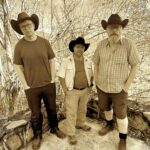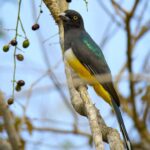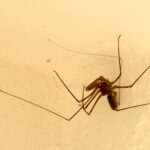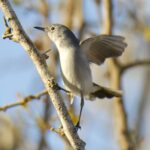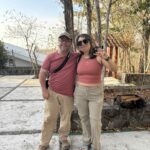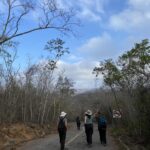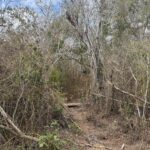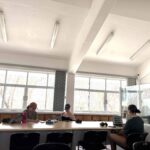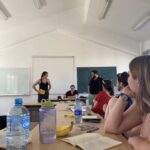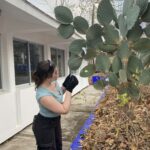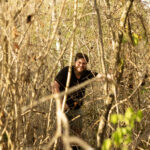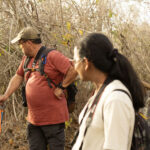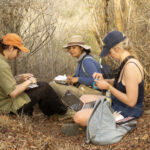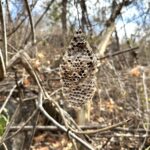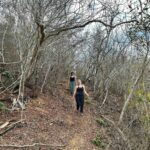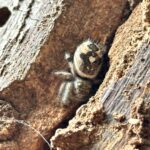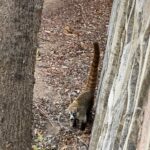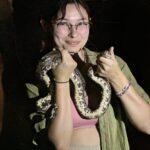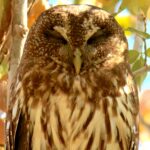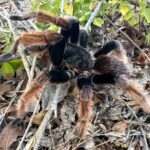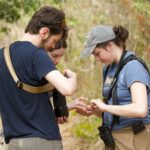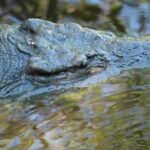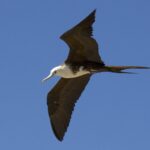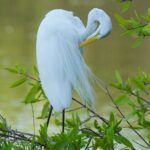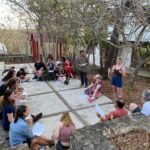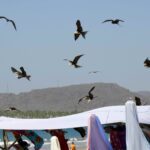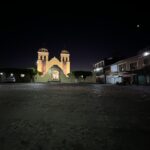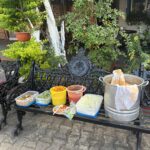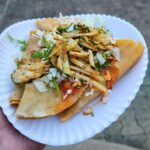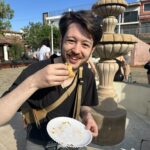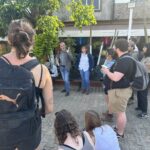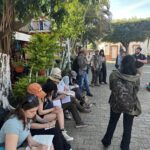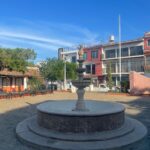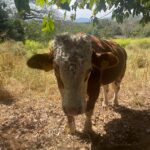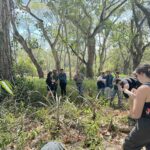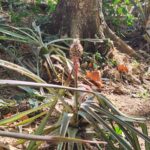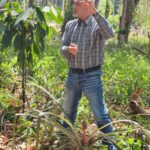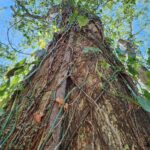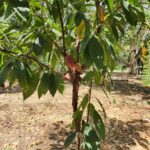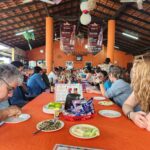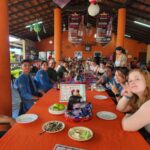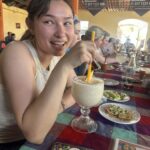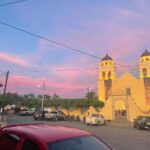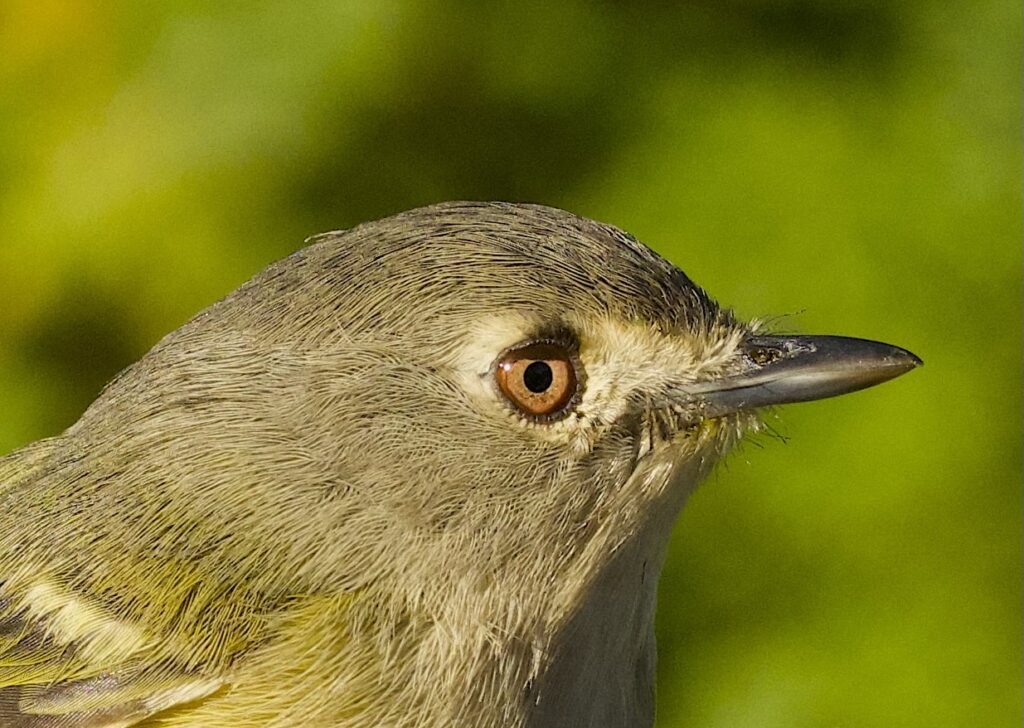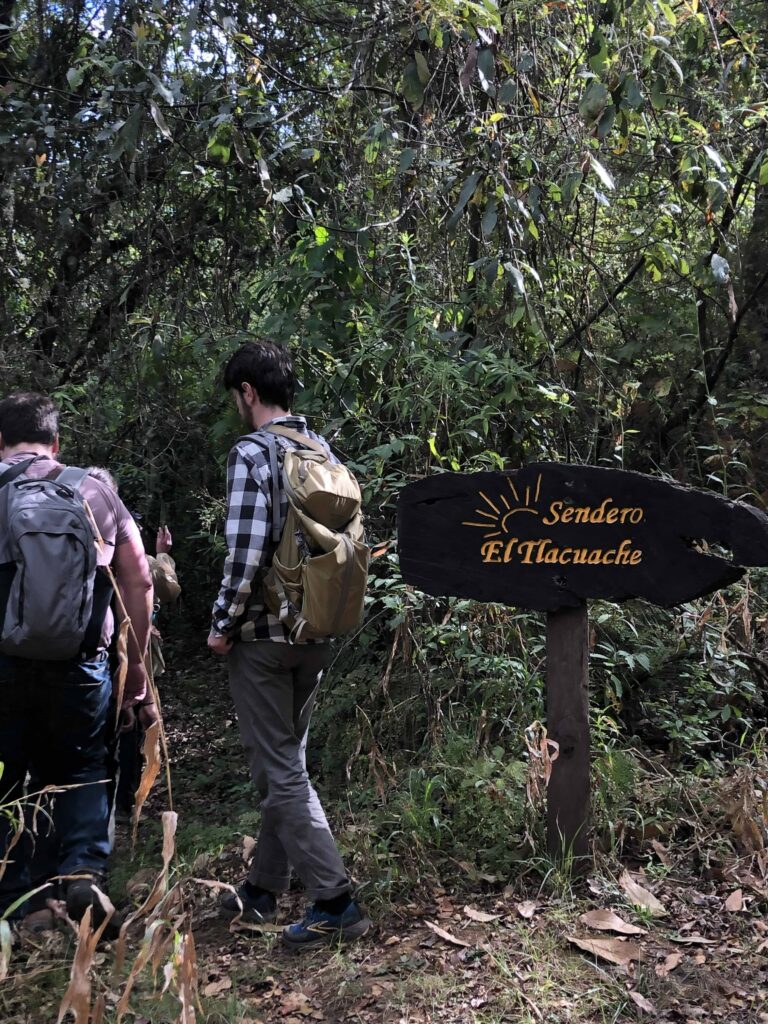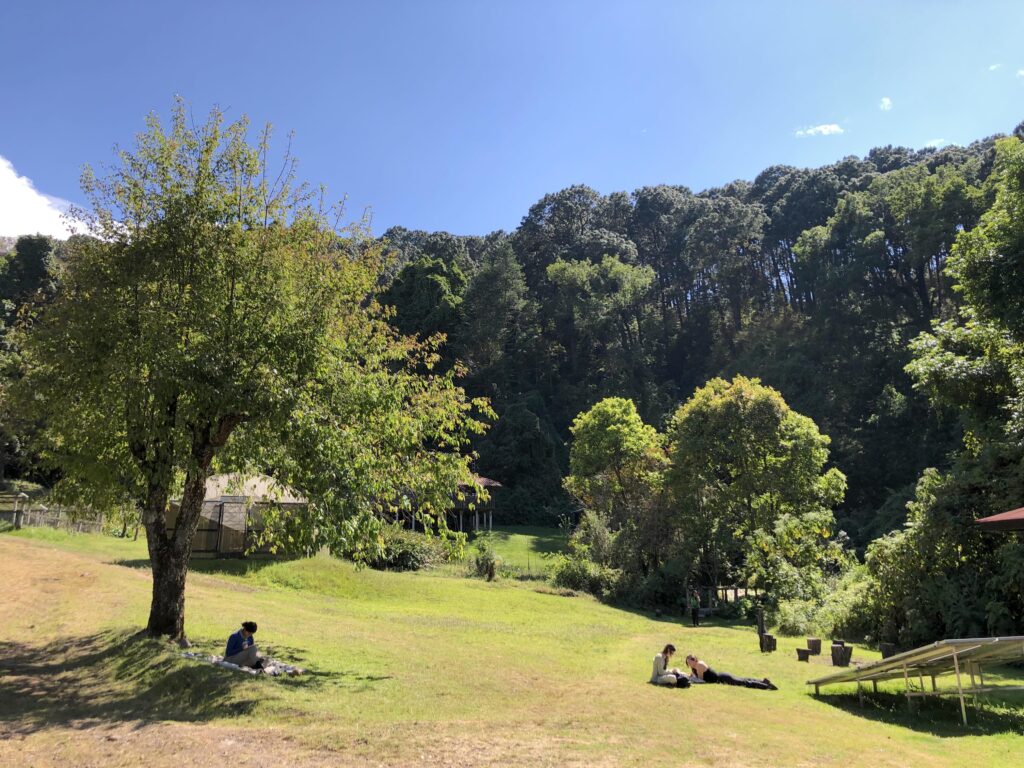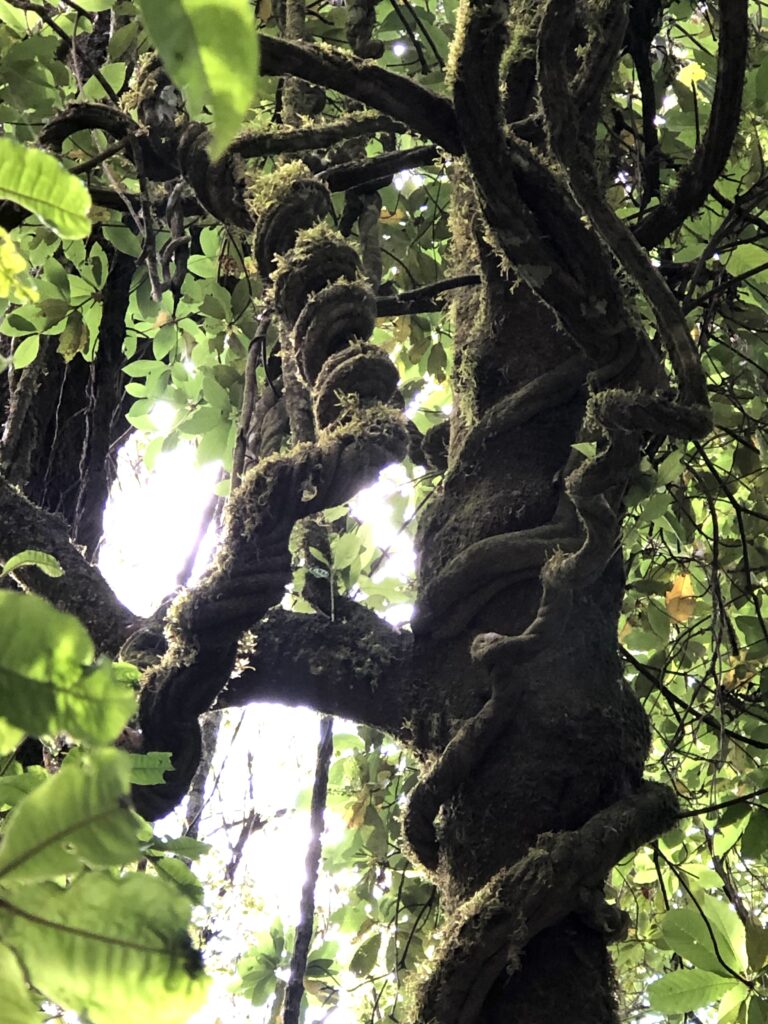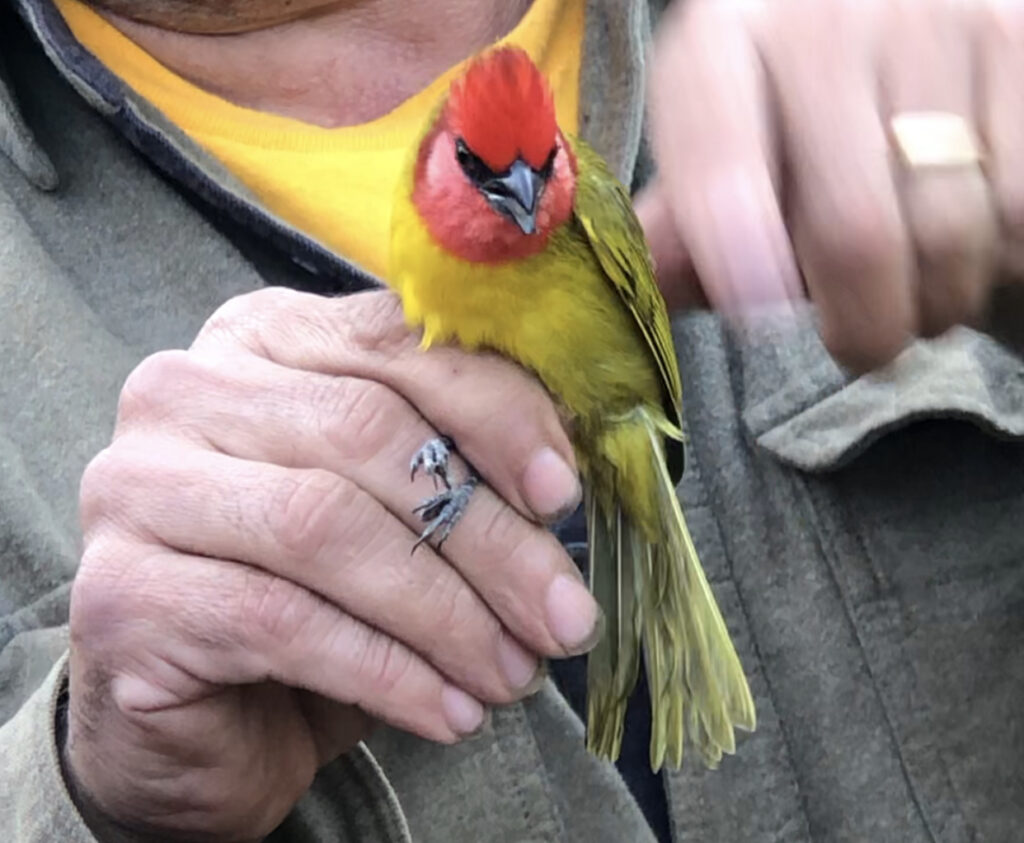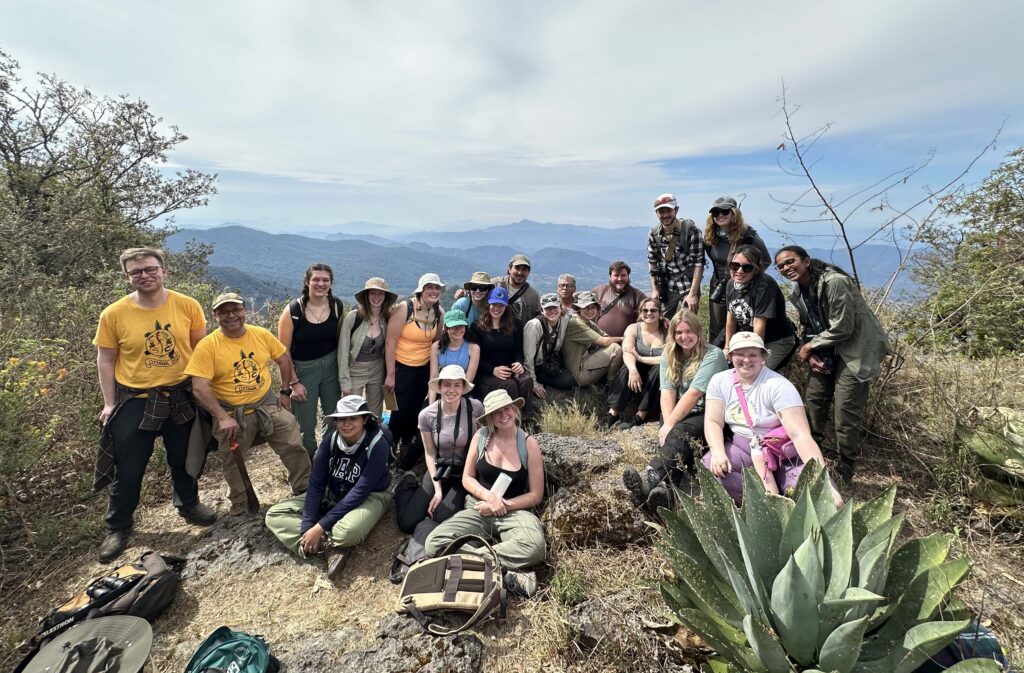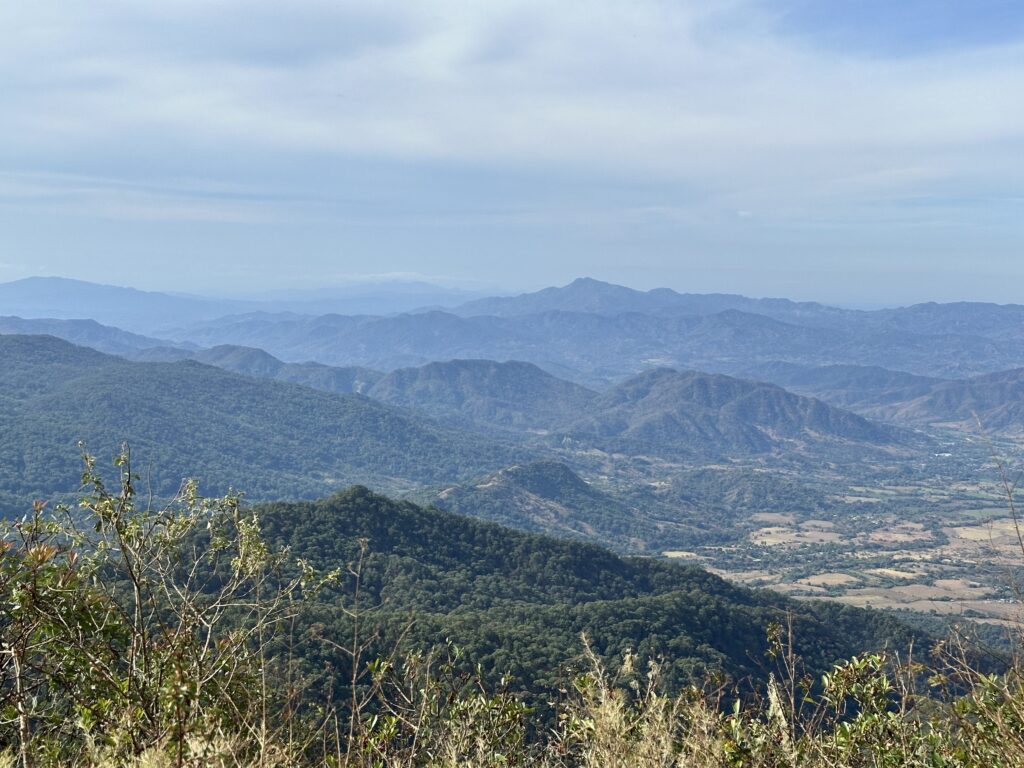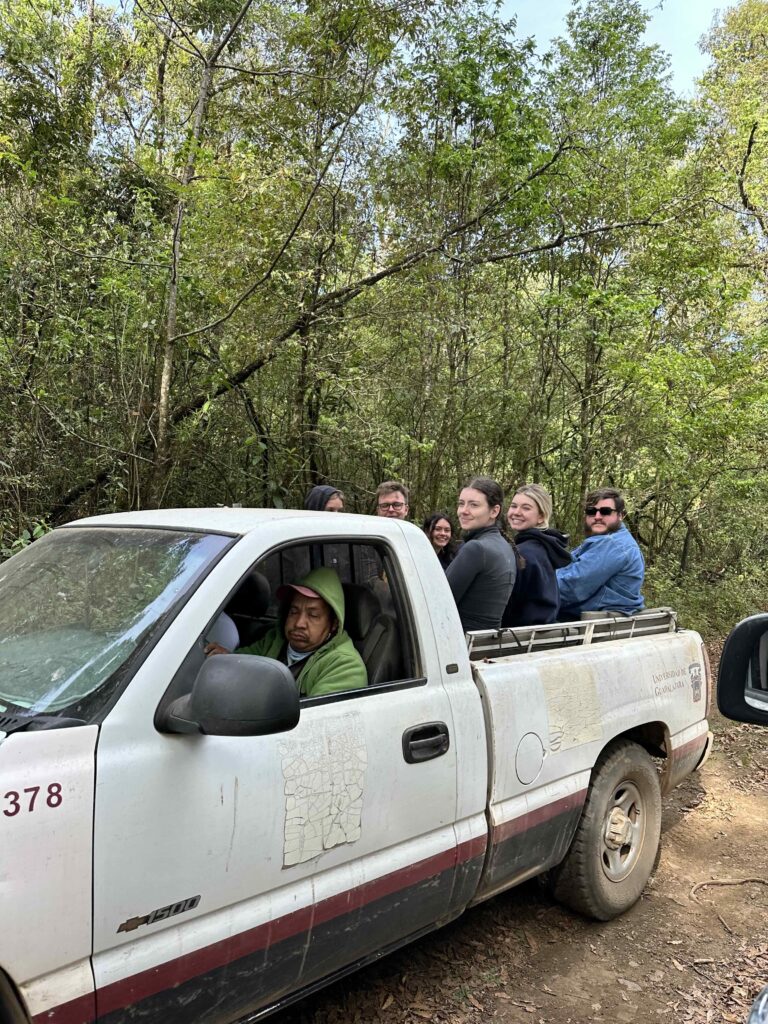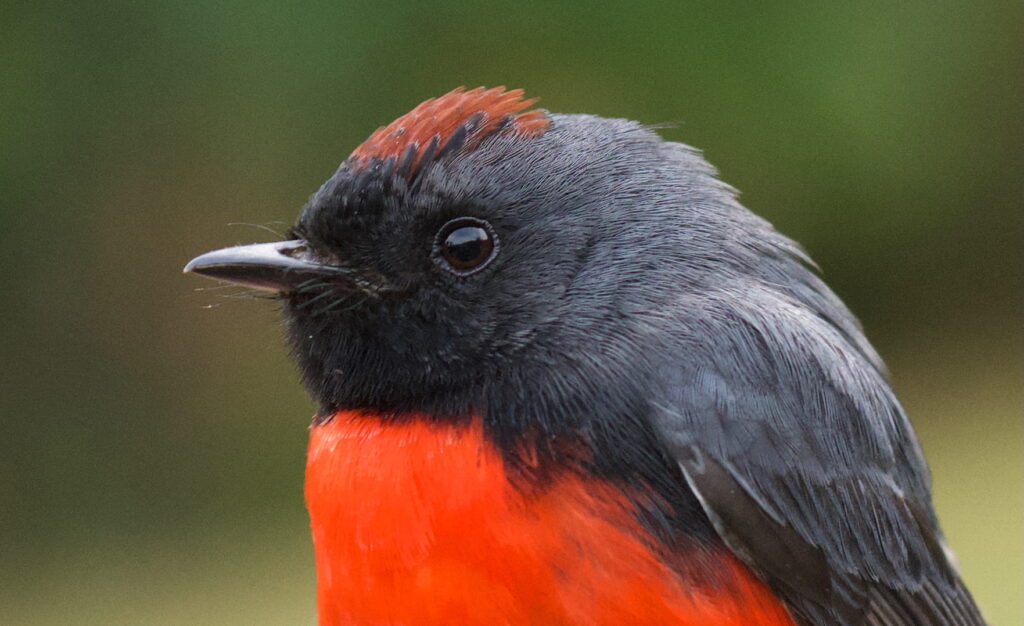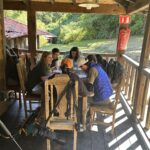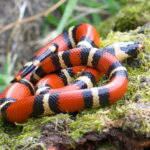Grupos uno y dos/Groups 1+2: Mica Mae, Ciara, Alexia, Elyse, Amyre, Bailey
Hello from Chamela, day 4!
This morning was quiet, with many of us sleeping right up until breakfast at 7:30 am, after which our first full day of data collection began. Over the past few days, each group has created their own ecological hypothesis that is testable based on resources here at Chamela. The data we collect will be used to create our final research reports for this class. Some subjects of research include lizards, birds, and cacti.
In Group 1, we are testing how the different environments (dry top land vs arroyo) affects leaf morphology, specifically testing the length and width of the leaves of the species Bonellia Macrocarpa. In Group 2, we are testing the hypothesis that water availability fundamentally changes forest structures, altering both tree density and trunk diameter. Our data collection involved marking off 5 by 5 meter quadrats in the forest, and counting and measuring stems.
Though our projects were quite different, they both led us to the same place at the same time; we met up at the arroyo, mid-morning, and spotted some coatis watching us from overhead. We joined forces to make the hike back to campus. A few of us recovered from the journey with a much needed nap.
By 12:30 pm the temperature was at its peak, about 30 degrees C, and we were ready for a break in the AC. We gathered into the classroom to listen to Clarisa and Alexia present their seminars on Mesoamerican crops, and wetland diversity, respectively.
After that, we enjoyed some lunch, and had some down time until the temperature got cooler. Most of us headed back out on the trails around 5-6pm to collect more data. Just before heading out, Ciara spotted a wonderful photoshoot in progress: Steve, Javier, and David all posing in matching cowboy hats.
At 7pm we gathered once again, this time to listen to some species presentations. Jade and Bailey did a fantastic job, but the real highlight of the evening was Steve announcing that tomorrow will be a beach day! After a lot of hard work in the heat, we are ready to relax in the sun.
As one final treat before bed, David spotted a Mexican Burrowing Python. A couple of us got to hold him, and many of us got pictures. It was really special since this was the first time this species of snake had been spotted on this course!
And with that, it’s bedtime. Adios!
Español
Grupos uno y dos: Mica Mae, Ciara, Alexia, Elyse, Amyre, Bailey
¡Hola desde Chamela, día 4!
Esta mañana fue tranquila, y muchos dormimos hasta las 7:30 a. m., hora del desayuno, tras la cual comenzó nuestro primer día completo de recolección de datos. Durante los últimos días, cada equipo ha creado su propia hipótesis ecológica, comprobable con base en los recursos de Chamela. Los datos recopilados se utilizarán para elaborar los informes finales de investigación de este curso. Algunos temas de investigación incluyen lagartijas, aves y cactus.
En el Grupo 1, estamos evaluando cómo los diferentes ambientes (tierra seca en colinas vs. arroyo) afectan la morfología foliar, específicamente evaluando el largo y ancho de las hojas de la especie Bonellia Macrocarpa. En el Grupo 2, estamos evaluando la hipótesis de que la disponibilidad de agua cambia fundamentalmente las estructuras forestales, alterando tanto la densidad de los árboles como el diámetro del tronco. Nuestra recolección de datos implicó delimitar cuadrados de 5 x 5 metros en el bosque, y contar y medir los tallos.
Aunque nuestros proyectos eran bastante diferentes, ambos nos llevaron al mismo lugar a la misma hora; nos encontramos en el arroyo a media mañana y vimos unos coatíes observándonos desde arriba. Unimos fuerzas para emprender la caminata de regreso a la estación. Algunos nos recuperamos de la caminata con una merecida siesta.
A las 12:30 p. m., la temperatura estaba en su punto máximo, unos 30 °C, y estábamos listos para un descanso en el aire acondicionado. Nos reunimos en el aula para escuchar a Clarisa y Alexia presentar sus seminarios sobre cultivos mesoamericanos y diversidad de humedales, respectivamente.
Después, disfrutamos del almuerzo y descansamos un rato hasta que el calor bajó. La mayoría regresamos a los senderos alrededor de las 5-6pm para recopilar más datos. Justo antes de salir, Ciara vio una maravillosa sesión de fotos en progreso: Steve, Javier y David posando con sombreros de vaquero iguales.
A las 7pm nos reunimos de nuevo, esta vez para escuchar algunas presentaciones de especies. Jade y Bailey hicieron un trabajo fantástico, pero lo mejor de la noche fue cuando Steve anunció que mañana sería día de playa. Después de mucho trabajo bajo el calor, estábamos listos para relajarnos bajo el sol.
Como último capricho antes de dormir, David avistó una pitón excavadora mexicana. Un par de nosotros pudimos sostenerla y muchos le sacamos fotos. ¡Fue realmente especial, ya que era la primera vez que se veía esta especie de serpiente en esta excursión!
Y con esto, ¡a dormir! ¡Adiós!
- boys in hats
- citreoline trogon
- Mexican burrowing python
- whip scorpion – outside Steve’s room
